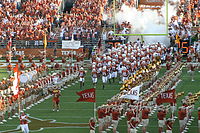
Photo from wikipedia
Purpose: Respiratory motion may impose significant inaccuracies on emission activity estimation in quantitative SPECT. This effect may be a major issue in dosimetry as used in the management of liver… Click to show full abstract
Purpose: Respiratory motion may impose significant inaccuracies on emission activity estimation in quantitative SPECT. This effect may be a major issue in dosimetry as used in the management of liver radioembolization. The purpose of this study was to investigate the impact of respiratory motion on radioembolization liver dosimetry for different SPECT acquisition settings. Methods: In a series of SPECT/CT Monte Carlo simulations using several digital XCAT phantoms, the following parameters were varied: breathing/nonbreathing, liver tumor size (0.3–35 ml) and location, patient properties (body mass index ranging from underweight to obese; male and female), acquisition time (10–30 s/view), collimator setup (High Sensitivity, High Resolution, Ultra High Resolution) and tumor VOI. The effect of applying a respiratory gating scheme was examined as well. Results: Breathing decreased activity recovery and tumor/non‐tumor (T/N) ratios on average from 90% to 66%. VOIs based on SPECT images instead of breath‐hold CT improved T/N values significantly. The most accurate results were obtained using a gating scheme combined with SPECT‐based VOIs. Scan duration, body mass index, sex, and location all had a minor effect. Lung shunt fraction estimations were relatively unaffected by any of the varied parameters. Conclusions: Respiratory motion has a large effect on SPECT activity quantitation of liver tumors as used in radioembolization treatment planning and assessment. As compared with the other parameters that were varied in this study, respiration is the predominant degrading effect on image quantitation. Gating alleviates much of this detrimental effect.
Journal Title: Medical Physics
Year Published: 2017
Link to full text (if available)
Share on Social Media: Sign Up to like & get
recommendations!